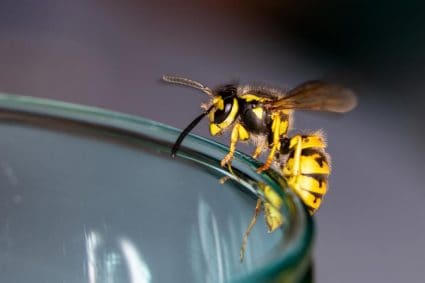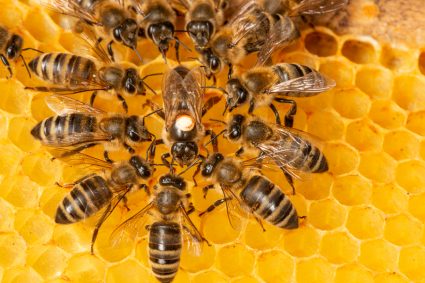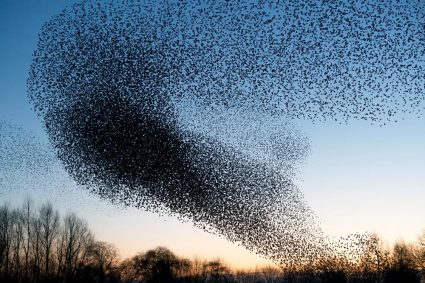
The joy of having a koi pond in your backyard can be short-lived if you find yourself constantly battling against predators like hawks. While fish might not be a hawk’s primary food source, these opportunistic feeders won’t pass up a chance to snag a koi if they spot it. This article will guide you through various strategies on how to deter hawks from your koi pond.
To deter hawks from your koi pond, provide adequate cover by adding floating plants or water lilies, install netting or wire mesh above the pond, use visual and sound-based deterrents like scarecrows, reflective objects or wind chimes, and train your fish to recognize potential threats. You can also install roosting spikes on perching areas, remove vantage points, use decoys, and install pond netting. However, always ensure your methods are non-lethal and humane, as hawks are protected by law.
Understanding the Hawks
Before we delve into the strategies, it’s important to understand the types of hawks that are likely to target your koi pond. The most common is the red-tailed hawk. Although koi fish are quite large and require significant effort for a hawk to capture and eat, these birds are relentless and won’t shy away from the challenge. Besides hawks, other predators like herons, raccoons, minks, otters, cats, dogs, and even owls can pose a threat to your koi pond.
Designing Your Pond to Deter Hawks
One preventative measure is to design your pond in a way that deters hawks. Here are a few modifications you can make:
1. Provide adequate cover: Add floating plants or water lilies to your pond to create cover, making it harder for hawks to spot and approach your fish.
2. Create an overhang: Install netting or wire mesh above the water surface to physically deter hawks from accessing your pond.
3. Use visual deterrents: Place scarecrows, reflective objects, or realistic plastic owls around the pond to create an illusion of an active and hostile space.
4. Employ sound-based deterrents: Use wind chimes, motion-activated sprinklers, or a radio playing at intervals to startle and discourage hawks from approaching your koi pond.
5. Train your fish: Train your koi to recognize potential threats by using a handheld whistle or horn every time you feed them. They will associate the sound with food and eventually learn that it indicates danger.
6. Install roosting spikes on perching areas: Make potential perching areas difficult for hawks to hold onto by installing roosting spikes.
7. Remove vantage points: Hawks like a clear view when they stalk their prey, so eliminate potential vantage points within a 100-yard radius from your home.
8. Use decoys: Place decoys like a blue heron statue, predator statue, or goose/swan statue near your pond to deter real hawks.
9. Install pond netting: Pond netting can help deter predators, but it may detract from the beauty of your pond. Use it as a last resort if other tactics don’t work.
Tools and Products to Deter Hawks
There are several tools and products available on the market that can assist in deterring hawks from your koi pond.
1. Hawk decoys: Red-tailed hawk decoys are considered effective in deterring pest birds. The Red-Tailed Hawk Decoy from Bird B Gone is a popular choice.
2. Noise deterrents: Ultrasonic bird repellent devices can be used to scare hawks away without causing harm to the birds.
3. Reflective deterrents: Shiny reflective surfaces, such as CDs or reflective tape, can be used to scare and confuse hawks.
4. Roosting spikes: Installing roosting spikes on potential perching areas can deter hawks from landing and surveying your property.
5. Netting or chicken pens: Installing anti-hawk netting or chicken pens can help protect your poultry from hawks by creating a physical barrier.
6. Guard dogs or roosters: Having a guard dog or rooster on your property can help deter hawks, as they are known to protect their flock from predators.
Legal Considerations
It’s important to note that while it’s legal to deter hawks, these birds are protected by law, and it’s illegal to harm them. Always ensure that your deterrent methods are non-lethal and humane.
Conclusion
Protecting your koi pond from hawks and other predators may require a combination of methods and ongoing effort. However, by implementing the strategies discussed in this article, you can create a safe and enjoyable environment for your fish, ensuring the tranquility of your koi pond.
Frequently Asked Questions
What are some examples of floating plants or water lilies that I can add to my pond?
Some examples of floating plants that you can add to your pond include Water Hyacinth, Water Lettuce, and Duckweed. As for water lilies, you can consider varieties like the Hardy Water Lily or Tropical Water Lily.
How do I train my koi to recognize potential threats?
You can train your koi to recognize potential threats by using a handheld whistle or horn every time you feed them. Over time, they will associate the sound with food and eventually learn that it indicates danger.
Where can I purchase a Red-Tailed Hawk Decoy?
Red-Tailed Hawk Decoys can be purchased from various online retailers such as Amazon, eBay, or specialized bird deterrent stores. One popular product is the Red-Tailed Hawk Decoy from Bird B Gone.
Are there any other predators I should be aware of besides hawks?
Yes, besides hawks, other predators like herons, raccoons, minks, otters, cats, dogs, and even owls can pose a threat to your koi pond.
How often should I use noise deterrents?
The frequency of using noise deterrents depends on the severity of the hawk problem. If hawks are a constant issue, it is recommended to use noise deterrents daily to keep them at bay.












